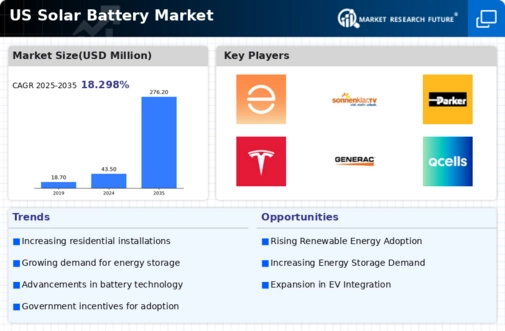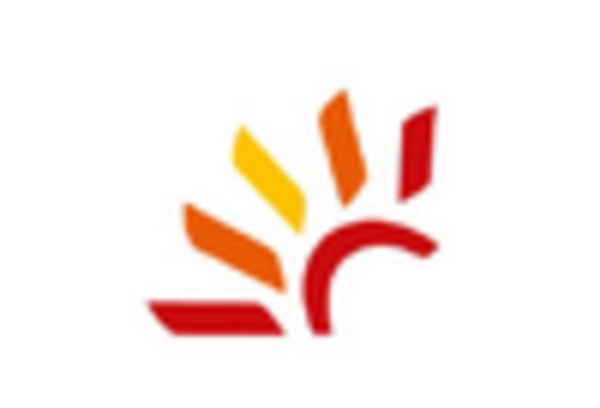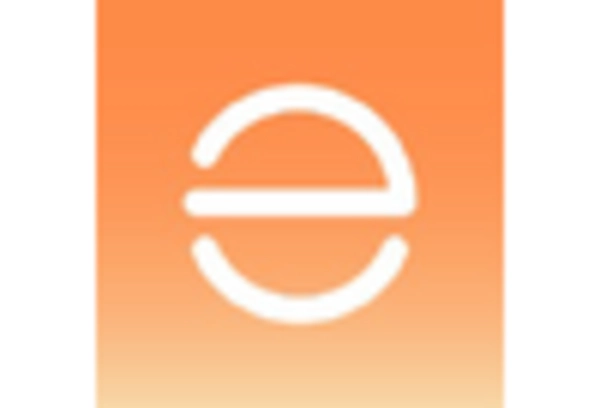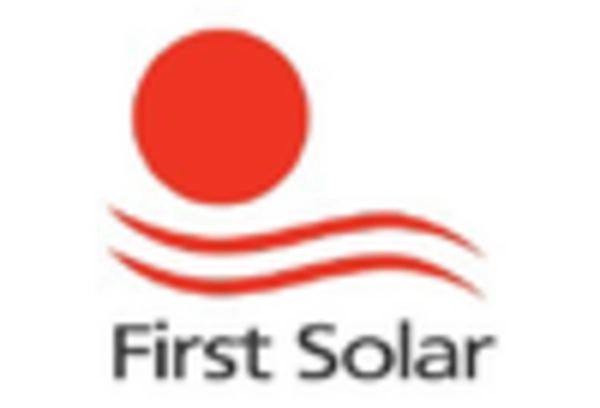The solar energy-and-battery-storage market is currently characterized by a dynamic competitive landscape, driven by technological advancements, regulatory support, and increasing consumer demand for sustainable energy solutions. Major players such as Tesla (US), NextEra Energy (US), and Enphase Energy (US) are at the forefront, each adopting distinct strategies to enhance their market positioning. Tesla (US) continues to innovate with its energy storage solutions, focusing on integrating solar technology with electric vehicle infrastructure, thereby creating a comprehensive ecosystem. NextEra Energy (US) emphasizes its commitment to renewable energy through aggressive investments in solar projects and battery storage, aiming to expand its operational footprint across the U.S. Meanwhile, Enphase Energy (US) is leveraging its microinverter technology to enhance solar panel efficiency, positioning itself as a leader in residential solar solutions. Collectively, these strategies contribute to a competitive environment that is increasingly focused on innovation and sustainability.
In terms of business tactics, companies are localizing manufacturing and optimizing supply chains to mitigate risks and enhance efficiency. The market structure appears moderately fragmented, with a mix of established players and emerging startups. This fragmentation allows for diverse offerings and competitive pricing, although the influence of key players like Tesla (US) and NextEra Energy (US) remains substantial, shaping market trends and consumer preferences.
In October 2025, Tesla (US) announced the launch of its new solar roof product, which integrates seamlessly with its Powerwall battery storage system. This strategic move is significant as it not only enhances Tesla's product portfolio but also reinforces its commitment to providing comprehensive energy solutions for residential customers. By combining solar generation with energy storage, Tesla (US) aims to offer a more efficient and sustainable energy alternative, potentially increasing its market share in the residential sector.
In September 2025, NextEra Energy (US) secured a $1 billion investment to expand its solar and battery storage projects across several states. This investment is crucial as it underscores the company's aggressive growth strategy and its focus on scaling renewable energy production. By enhancing its capacity, NextEra Energy (US) positions itself to meet the growing demand for clean energy, while also contributing to the U.S. energy transition.
In August 2025, Enphase Energy (US) launched a new software platform designed to optimize energy management for residential solar systems. This platform is expected to enhance user experience and improve system performance, thereby solidifying Enphase Energy's (US) competitive edge in the residential market. The integration of advanced software solutions indicates a trend towards digitalization in the solar sector, which may redefine customer engagement and operational efficiency.
As of November 2025, current competitive trends in the solar energy-and-battery-storage market include a strong emphasis on digitalization, sustainability, and the integration of artificial intelligence (AI) in energy management systems. Strategic alliances among companies are increasingly shaping the landscape, fostering innovation and collaboration. Looking ahead, competitive differentiation is likely to evolve from traditional price-based competition to a focus on technological innovation, reliability of supply chains, and the ability to deliver comprehensive energy solutions. This shift may redefine market dynamics, compelling companies to invest in R&D and strategic partnerships to maintain a competitive edge.

















Leave a Comment